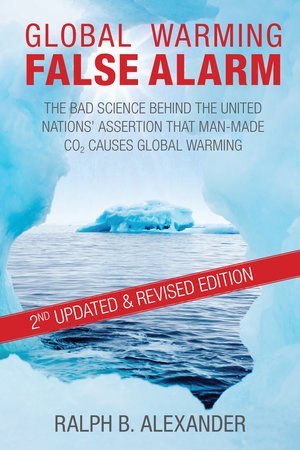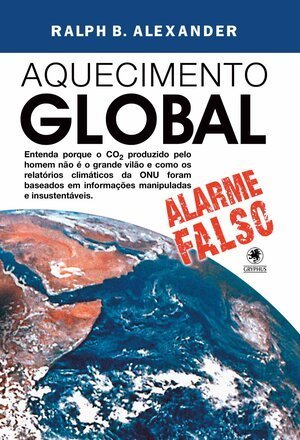Update: No Grand Solar Minimum Likely Anytime Soon
/When empirical evidence doesn’t confirm the predictions of a hypothesis, the hypothesis is unequivocally wrong as emphasized in the header to this blog. But I’m guilty of ignoring this fundamental principle of the scientific method, in the aftermath of a blog post I wrote nearly five years ago titled “Upcoming Grand Solar Minimum Could Wipe Out Global Warming for Decades.” Within two years of the post it was clear that the evidence didn’t support this assertion, but I failed to recognize that until now.
In the post, I over emphasized the prediction of Northumbria University’s Valentina Zharkova that the sun was about to enter a period of diminished output known as a grand solar minimum – a prolonged cold stretch she estimated would last almost 35 years, in which global temperatures would drop by as much as 1.0 degrees Celsius (1.8 degrees Fahrenheit).
Her prediction was based on past observations of small dark blotches on the sun’s surface called sunspots, which are caused by magnetic turbulence in the sun’s interior and signal subtle changes in solar output or activity. Together with the sun’s heat and light, the monthly or yearly number of sunspots goes up and down during the approximately 11-year solar cycle, as can be seen in the figure below.
Zharkova observed that the maximum number of sunspots observed in a cycle had declined over several decades, from cycle 21 which peaked around 1980 to cycle 23 which peaked around 2000 (the 3rd and 5th peaks from the left in the figure above, respectively). A further drop in cycle 24 which peaked around 2015, and was the weakest cycle in 100 years, only served to reinforce her prediction of weaker yet future cycles: an upcoming grand solar minimum.
Zharkova’s prediction depended on a somewhat obscure statistical analysis, in which she linked grand solar minima that recur every 350 to 400 years to a drastic falloff in the sun’s internal magnetic field. The fluctuations in the solar magnetic field arise from regular variations in behavior of the very hot plasma powering our sun.
The last grand solar minimum occurred several centuries ago, the so-called Maunder Minimum from approximately 1645 to 1710, forming part of the Little Ice Age. Solar scientists have calculated that the sun’s heat and light output, a quantity known as the total solar irradiance, decreased by 0.22% during that minimum, which is about four times its normal rise or fall over an 11-year cycle.
The next figure depicts Zharkova’s calculated magnitude of the magnetic field from 1975 to 2040 that diminishes as her projected minimum approaches. On the basis of this calculation, she predicted that the peak sunspot number in cycle 25 would be 93, or 20% lower than the peak 116 in cycle 24 (the 1st and 2nd peaks from the right in the figure above, respectively), and 60% lower in cycle 26.
However, as pointed out by a persistent commenter on my original post, subsequent observations tell a very different story. Cycle 25 utterly refutes Zharkova’s prediction of a 20% lower peak than cycle 24, as is evident in the first figure above. Cycle 25 was already 16% stronger than cycle 24 two years ago, and the sunspot number is currently a whopping 158 or 70% stronger than cycle 24. So her prediction was badly off the mark and there’s no evidence of an impending grand solar minimum.
Other solar researchers have also predicted an imminent grand solar minimum, but for different reasons. One of the earliest predictions was by German astronomer and scholar, Theodor Landscheidt, in 2003. Landscheidt predicted a protracted cold period centered on the year 2030, based on his observations of an 87-year solar cycle known as a Gleissberg cycle.
A more recent prediction, based on a longer 210-year solar cycle, is that of Russian astrophysicist Habibullo Abdussamatov. He has projected a more extended period of global cooling than either Zharkova or Landscheidt, lasting as long as 65 years, with the coldest interval around 2043.
Clearly, these and other researchers who made the same claim were as mistaken as Zharkova. The myth of an approaching grand solar minimum was in fact debunked two years ago in a little-known post by prominent climate change skeptic Javier Vinós, who detailed the history of the myth and accused Zharkova and other climate scientists of misrepresentation to further their careers.
In conclusion, it’s worth noting that even the Solar Cycle 25 Prediction Panel, co-chaired by NOAA (the U.S. National Oceanic and Atmospheric Administration) and NASA, predicted in 2020 that the sunspot number in cycle 25 would be no higher than in cycle 24. Nonetheless, panel co-chair and solar physicist Lisa Upton said at the time: “There is no indication we are approaching a Maunder-type minimum in solar activity.”
Hat tip: Braintic
Next: Math Teacher, Sole Climate Scientist Unlock Mystery of Recent Global Warming Spike






